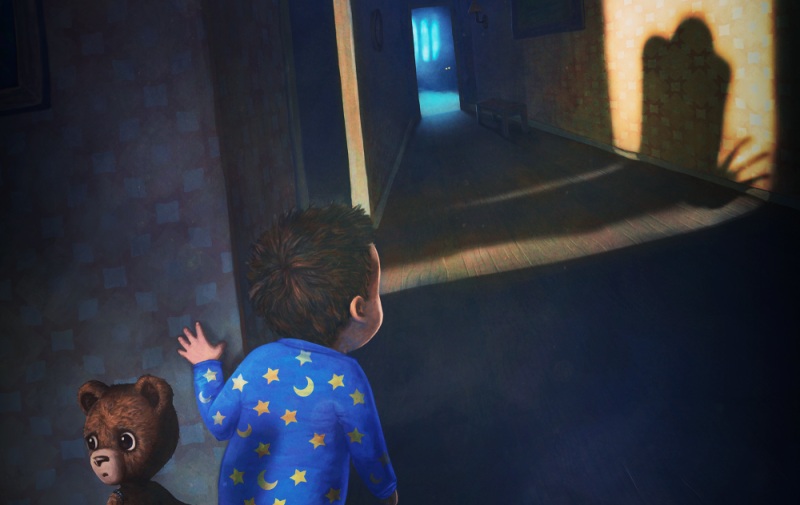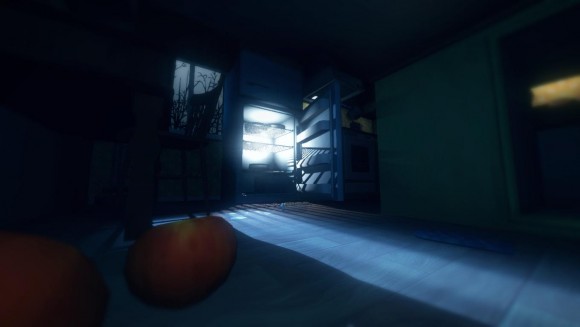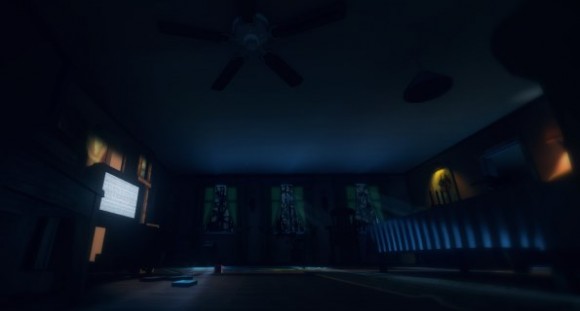Horror’s a funny thing. Our own Dylan has written about horror in games quite extensively in the past and it must be said that the man knows his horror, even if he doesn’t seem to agree with me that Pontypool is one of the most conceptually terrifying films ever made. The chief problem with horror games is that there’s an inherent conflict between granting a player agency within the game world and between exploiting the vulnerability felt by a horror protagonist.
Horror fiction and film trades heavily in this vulnerability: the fear of the unknown and the unseen, the threat of the outsider, the removal of social safety nets… these are all common horror motifs, central to the genre even where individual works attempt to subvert horror. Games, on the other hand, are left either separating the horror from the rest of the game (as in the F.E.A.R series, with its spooks and jumpscares carefully segregated from its gunplay) or lumbering the player with janky controls to leave them clumsy in the face of direct threat (as in any number of Japanese survival horror games from the 1990s and early 2000s).
Both of these solutions have become increasingly unviable over time, with increasingly sophisticated players proving less and less willing to tolerate both what is now commonly termed ludonarrative dissonance and frankly shitty controls. Happily, developers have often proven willing to step up to the challenge, with imaginative titles like Amnesia: The Dark Descent (2010) and Clocktower 3 (2002) / Haunting Ground (2005) focusing on flight and concealment rather than improbable combat, Michigan: Report From Hell (2004) placing the player behind a video camera and thereby detaching them from the events on screen – a neat videogame trick that in some ways replicates the experience of watching a film – or Miasmata (2013), arguably the best of a number of indie games that demand players explore an environment for supplies whilst remaining one pace ahead of a relentless pursuer (which, actually, brings us back around to Clocktower).
To this category of horror games we may be able to add Among the Sleep, the first major project from Norwegian studio Krillbite. Among the Sleep, currently in alpha, puts players in the tiny socks of a toddler – whose interactions with the world and limited to crawling (or toddling at a slow speed), pushing and pulling objects like doors and drawers in a similar manner to Amnesia or the Penumbra games, and climbing low objects.
It’s difficult to imagine a playable character more vulnerable than an infant, let alone more symbolic of the innocence that characterises many horror protagonists and victims. And this weakness in the face of the unknown will certainly be felt when crawling around a dark, empty house in search of your teddy bear and your parents. The twisting of an environment so familiar as a family household into a terrifying maze where the threat of danger lies around every corner makes the early minutes of Among the Sleep tremendously powerful, and this is no doubt why the game has won over so many critics and journalists.
Whilst I won’t for a moment deny the power and efficacy of this early part of the game, I will add that towards the end of the alpha things take a turn toward the fantastic – and while the design subsequently on display has its twisted charm, I worry that with this move away from the familiar and towards the fantastic the game may be robbed of its impact.
It is, in fairness, too early to say, and certainly C and I found Among the Sleep a terrifying experience from which we could not turn away. Here’s hoping Krillbite have what it takes to deliver on the promise of this opening segment.



Comments
2 responses to “Saturday Spotlight: Among the Sleep”
I don't play many horror games (I'm to busy creepin' on da ladies to be facing creepy crawlies) but Among The Sleep sounds great! At least to begin with.
Sexington, you sure as shit creep me out.
Yeah, it's a fantastic alpha and I really hope my reservations about where it subsequently goes prove unfounded. We shall see.